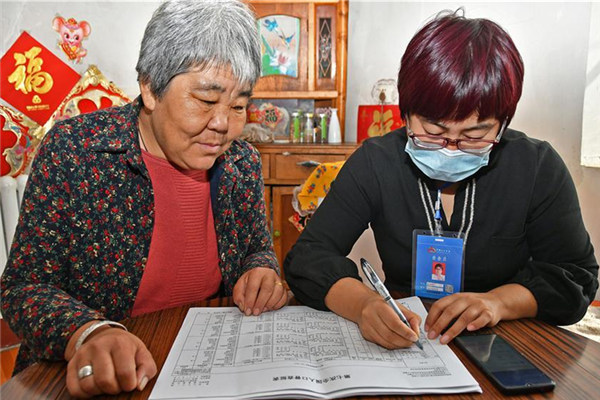
BEIJING — China on Nov 1 started its seventh national population count, with about 7 million census takers going door to door to document demographic changes in the world's most populous country.
Carrying out the census is critical to understand the population size, structure, and distribution, said Ning Jizhe, deputy head of the National Development and Reform Commission, at a video conference to promote the national census.
The census collects data including name, ID number, gender, marital status, education, and profession of Chinese citizens.
Huang Chenglin, a staffer with the census office of Liangqing district in Nanning, capital of South China's Guangxi Zhuang autonomous region, came to a community on the morning of Nov 1 to help residents use a registration service. Under the guidance of Huang, the whole registration process only takes a few minutes.
There are more than 3,000 census takers like Huang in the district, among over 280,000 in the autonomous region.
Residents are encouraged to use mobile terminals to report personal and family information.
"With just a few clicks on your smartphone, you can fill in all the census information. It's very convenient," said Wei Ziqing, a resident in Liangqing district.
Big data has also become a big helper for carrying out the census in East China's Jiangsu province.
Zhao Bo, a census taker in the city of Changzhou, did not receive an answer at one apartment in a residential building in the Qingguoxiang Community during the door-to-door household visits.
Zhao then scanned a QR code on the electric meter with a mobile app supported by the State Grid Changzhou Power Supply Company. It showed a red code, reassuring Zhao that no one was living in the apartment.
"In the past, when there was no answer at certain apartments, we had to make repeated visits, ask their neighbors to contact the apartment owner, or even tell whether anyone lived there by the dust on the door," Zhao said.
"Big data helps us find out whether anyone lives in the apartment or not, and thus saves us much trouble and improves census efficiency and accuracy," said Yuan Haijun, who is with the census office in the city.
China has conducted a national population census every 10 years since the 1990s. The previous census found its population had increased to 1.37 billion.



